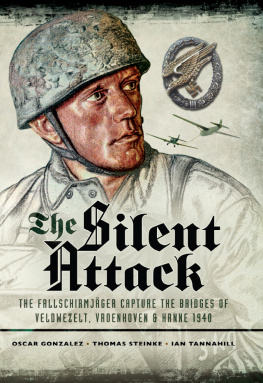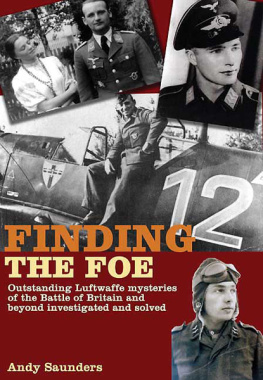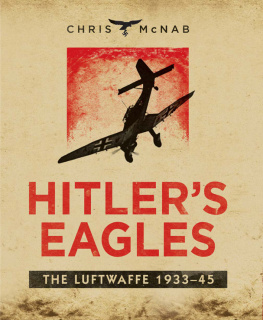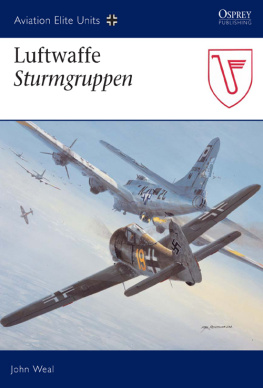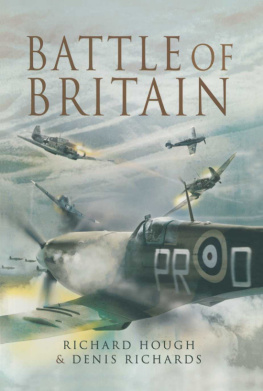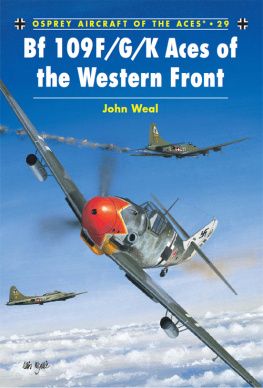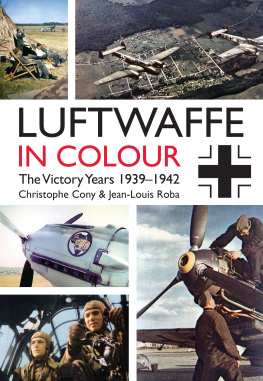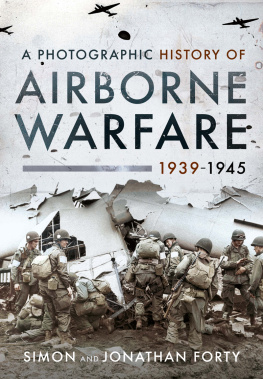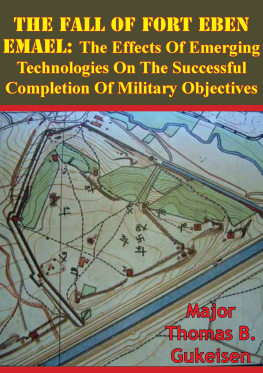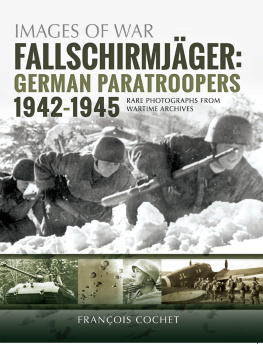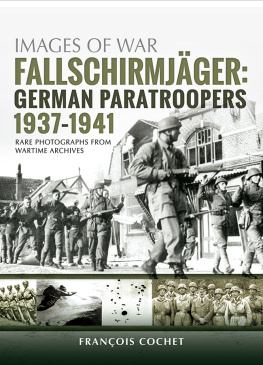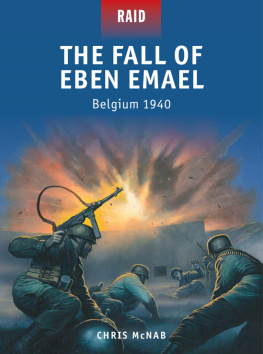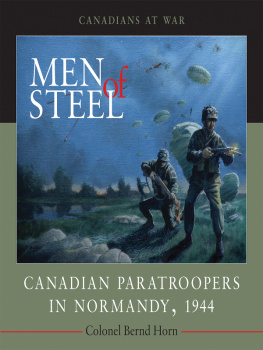
In memory of Kerri Tannahill

First published in Great Britain in 2015 by
Pen & Sword History
an imprint of
Pen & Sword Books Ltd
47 Church Street
Barnsley
South Yorkshire
S70 2AS
Copyright scar Gonzlez, Thomas Steinke and Ian Tannahill 2015
ISBN 978 1 78159 385 1
eISBN 9781473857865
The right of scar Gonzlez, Thomas Steinke and Ian Tannahill to be identified as the Authors of this Work has been asserted by them in accordance with the Copyright, Designs and Patents Act 1988.
A CIP catalogue record for this book is available from the British Library
All rights reserved. No part of this book may be reproduced or transmitted in any form or by any means, electronic or mechanical including photocopying, recording or by any information storage and retrieval system, without permission from the Publisher in writing.
Pen & Sword Books Ltd incorporates the imprints of Pen & Sword Archaeology, Atlas, Aviation, Battleground, Discovery, Family History, History, Maritime, Military, Naval, Politics, Railways, Select, Social History, Transport, True Crime, and Claymore Press, Frontline Books, Leo Cooper, Praetorian Press, Remember When, Seaforth Publishing and Wharncliffe.
For a complete list of Pen & Sword titles please contact
PEN & SWORD BOOKS LIMITED
47 Church Street, Barnsley, South Yorkshire, S70 2AS, England
E-mail: enquiries@pen-and-sword.co.uk
Website: www.pen-and-sword.co.uk
Foreword
O n 27 October 1939, Hitler summoned General Student to the Reich Chancellery. Student, one of the principal creators of the German parachute arm, expressed to Hitler his disappointment that airborne troops had not played a decisive role in the invasion of Poland. The latter calmed him by describing his plans for the intended Campaign in the West. Amongst other things, Hitler spoke of his own ideas which he had outlined six days previously at a conference with senior Army generals: the capture of the Belgian fort Eben-Emael together with three bridges over the Albert Canal and at Maastricht by paratroops landed from gliders. If successful, the plan would guarantee the German Army, and especially its panzer formations, a swift incursion into Belgium.
The preparations for this operation, made in the greatest secrecy, were begun at once, for the offensive against the West was scheduled for 12 November 1939. This date was subsequently postponed on repeated occasions, providing Sturmabteilung Koch with the time it needed to expand and prepare, requirements indispensable for the success of the plan. From the outset, the operation was seen to have an enormous strategic importance. After the so-called Mechelen Affair of January 1940, in which a German courier aircraft carrying the invasion plans was forced to make an emergency landing in the Belgian village of Mechelen north of Maastricht, the plan for the campaign was changed fundamentally to fall in with the ideas of General von Manstein. As a result, the SA Koch operation assumed far greater importance. It was no longer conceived as something of a gamble, but became firmly entrenched in the new plan, Sichelschnitt (stroke of the scythe) whose intention it was to lure the British and French troops nearest the fort region into the Belgian plain, and provide more realistic time schedules to replace the slogan Speed at all costs.
The overwhelmingly conservative-thinking generals of the German Army were not well disposed to the Luftwaffe airborne operation. In mid-November they had been given the task of seizing the bridges at Maastricht intact. From therearge unit they had drawn up a kind of Plan B for the event that the airborne operation might fail, not unusual, but bearing all the hallmarks of their doubts that it could succeed, as an anecdote shows regarding an incident on 22 April 1940.That day, SA Koch had a signals exercise. General Bock (C-in-C Army group B) and General von Reichenau (C-in-C 6.Army) attended a demonstration by Oberstleutnant Geiger (Commanding officer, Pioneer-Rgt 620) on how to cross a sand ditch 115 metres wide and sixteen metres deep. Support pillars were embedded and a previously prepared bridge brought up. This was impressively successful. Von Reichenau commented afterwards: My dear Geiger, I think you would be very disappointed to find that the Albert Canal bridges had fallen into our (i.e. Army) hands intact.
The participation of the Army in the SA Koch operation required the quickest possible relief of the paratroopers across the intact bridges at Maastricht. For this purpose a special Army unit wearing Dutch police uniforms was to descend upon Maastricht and seize the bridges. This pitiful plan failed. On 10 May 1940 the Germans were quickly unmasked and became embroiled in the fighting. While the paratroopers attacks on Fort Eben Emael (Operational Group Granit), and on the bridges at Veldwezelt, Vroenhoven and Kanne (Operational Groups Stahl, Beton and Eisen respectively) were carried out successfully, the bridges at Maastricht were quickly demolished by the Dutch, and the Army had to assemble pontoon ferries to extract the paratroopers those at Fort Eben Emael being forced to wait eighteen hours before leaving. Despite that shortcoming, the combined Army-Luftwaffe operation hailed today as exemplary was on the whole a success.
Which was more important, the fort or the bridges over the Canal? This question asked by the paratroopers involved cannot be answered in a Foreword. While numerous authors have concentrated on the Eben-Emael section of the operation, it is the main aim of this book to provide the most thorough review of the lesser known but far more bitter struggle for the three bridges and the preparations beforehand, from the standpoint of both belligerents.
The authors have succeeded in making good the poor German source material by interviewing eyewitnesses, by consulting private papers and by the publication of an enormous trove of mostly unknown photographs. In this way a gap in the history of the opening few days of the Campaign in the West has been successfully closed.
Gnter Schalich
Aachen, January 2011
Introduction in 1940
M uch has been written about the capture of the Belgian fort Eben-Emael by German paratroops on 10 May 1940. It was probably the best known and most daring attack of the Second World War. In this operation troop gliders and hollow charges were used for the first time in military history, and proved it possible to set down paratroopers behind enemy lines as special commandos in the pure sense. Training, secrecy, precision and speed linked to the element of surprise made these men into deadly weapons causing chaos amongst the Belgian defenders.
It must be mentioned that these paratroopers were part of a large unit, Sturmabteilung Koch (SA Koch), in 1940 the elite of the German Luftwaffe. Their mission was not only the capture of the Eben-Emael fort but also the three strategically important bridges over the Albert Canal at Veldwezelt, Vroenhoven and Kanne. The rapid capture of these bridges (two intact, one damaged) was decisive for the success of the German attack on Belgium and France. Although this latter aspect of the mission was an important part of the overall operation, it is fair to say that little is known of it.
The aim of this book is to provide a comprehensive and detailed report on how the attack on the bridges was planned and carried out using text based on documents, archives and personal statements, and many previously unpublished photographs. The authors have placed special emphasis on the latter. Every detail, from the training of the unit commanded by Walter Koch through to the final attack, was investigated thoroughly from best-source material together with eyewitness reports of many German and Belgian soldiers. From there we aimed for an objective historical chronicle from a military point of view but including honest moral judgements. This is a policy we consider essential in any research of the twentieth century with all its tensions and upheavals leading us to the unavoidable conviction that war dehumanizes.
Next page
